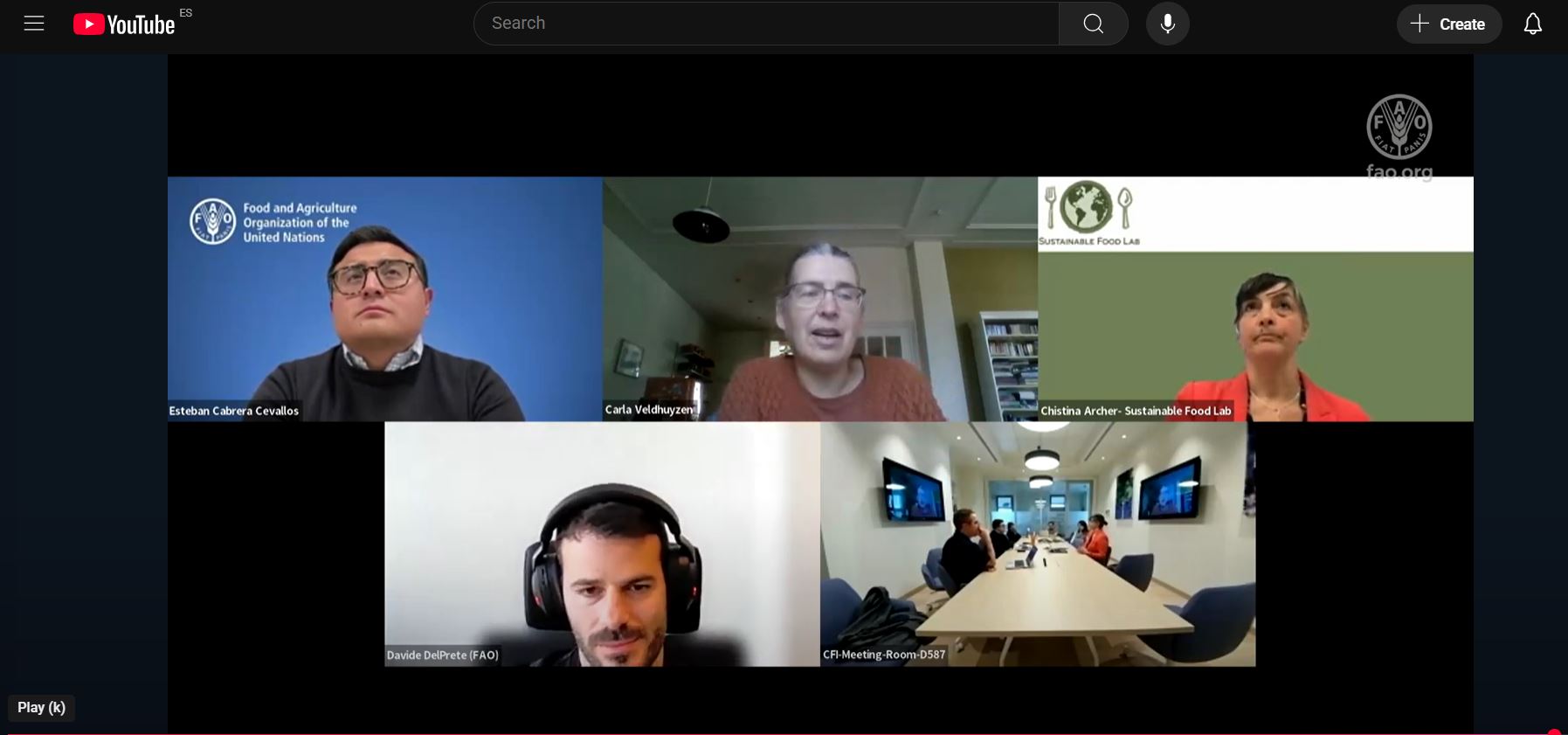Living income in focus – measuring and closing the gap for smallholder farmers
The Technical Network on Poverty Analysis hosted two-day webinar to discuss metrics and strategies to support a living income for smallholder producers of cash crops.

On April 9 and 10, the Technical Network on Poverty Analysis hosted a lively two-day webinar exploring metrics and strategies to support a living income for smallholder producers of cash crops. Experts, practitioners, and researchers came together to explore metric methodologies and strategies that can help close the income gap for smallholder farmers – one of the biggest barriers to sustainable agrifood systems.
Day 1: Measuring the Living Income Benchmark
On Day 1 of this hybrid event, the focus was on the calculation of Living Income Benchmarks (LIB) – the cost of securing a decent standard of living for a reference family in a specific location.

First day speakers
Katia Covarrubias, Economist at the Agrifood Economics and Policy Division (ESA) of the Food and Agriculture Organization of the United Nations (FAO), kicked off the session with a deep dive into two of the most well-established methods for calculating LIB. She also discussed the metrics used to compute the Living Income Gap (LIG) – the difference between a household’s net income and the local LIB –and proposed a new improved metric to monitor progress con closing the LIG.
Discussions included several key considerations for improving the accuracy and comparability of Living Income Benchmarks. First, reporting format matters: while LIBs are typically based on a reference household, expressing them in per-person or unitary terms can significantly improve comparability across various welfare metrics. Additionally, the estimated cost of a nutritious diet is highly sensitive to the assumptions used such as local pricing data, seasonal variations, and equivalence scales, which means that timing and methodology play a crucial role.
Beyond food and housing, participants stressed the importance of better accounting for other essential components of a decent standard of living, such as education, transportation, and healthcare, which are often overlooked but significantly contribute to overall living costs.
Beyene Teklu from Hawassa University emphasized that regional disparities in LIBs often stem from local conditions, not just methodology. In fact, in some cases, LIBs closely align with national poverty lines.
Richard and Martha Anker, founders of the Anker Research Institute, highlighted the flexible, context-specific nature of their LIB methodology, which prioritizes both accuracy and comparability.
FAO’s Project Officer Victor Prada pointed out the importance of stakeholder engagement: while cooperatives tend to favor context-driven approaches, exporters often prefer standardized models for global alignment.
Day 2: Setting living income reference prices
On Day 2, the conversation shifted to Living Income Reference Prices (LIRP) – a widely used tool in high-value crop supply chains aimed at ensuring farmers can earn a decent livelihood from their production.

Second day speakers
Carla Veldhuyzen from FairTrade International, walked participants through the three key pillars of LIRP:
- The local Living Income Benchmark
- Cost of sustainable production
- The land size and yield needed to support a household relying on the crop
She underscored that while LIRPs should act as price floors, ensuring farmers don’t fall below a minimum income level, they are not price ceilings – when market prices rise, so should farmers' earnings.
But implementation isn't without hurdles. Davide DelPrete, Economist at ESA, shared real-world insights from Rwanda, where reference prices have sometimes been misused as both floors and ceilings, defeating their intended purpose. He stressed that buyer engagement is essential for LIRPs to succeed.
Other challenges include the reliance on national yield averages, which can result in unrealistic production targets for many smallholders, and price volatility – since production costs fluctuate over time, regular updates to LIRPs are essential to keep them relevant.
These two days reinforced not just the technical complexity but also the collaborative spirit needed to ensure farmers earn a living income. As the world continues to push for fairer, more resilient food systems, tools like LIB and LIRP offer a practical and hopeful path forward.
- Living Income measurement methods – A comparative study and application to cocoa farmers in Cameroon
- Living Income Community of Practice
- FAO and European Commission gather in Seville to assess cocoa farmers' livelihoods and living costs in Cameroon
- Assessing living income standards in Cameroonian cacao villages
